11 Tips to write effective error messages
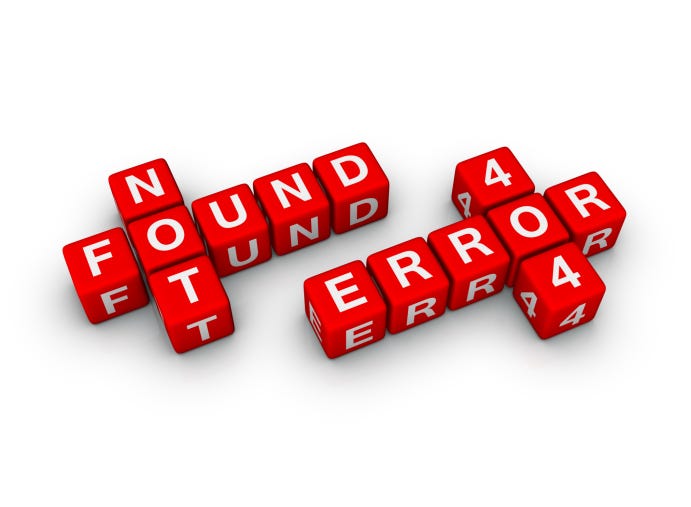
Mistakes are unavoidable in our lives. When a user is working on a product, it is very likely that he may stuck somewhere in response to his actions.
Such kind of situations can be frustrating for user if not handled properly within product. It depends on the experience that product is providing to its users.
“A product should be usable enough to handle the user’s erroneous actions gracefully.”
Below mentioned are few tips that when followed, error messages can also provide a pleasant experience to the user.
1. Be Clear And Not Ambiguous
Write error message in clear and simple language. User should be able to understand the problem while reading an error message.
If error message is ambiguous and user is not able to find the reason of message, then it is of no use. User cannot do anything to fix the problem and it badly impacts the experience of the product.
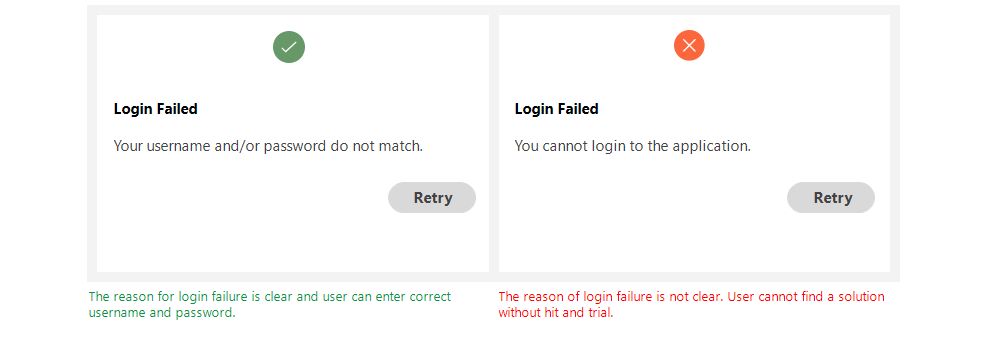
Examples:
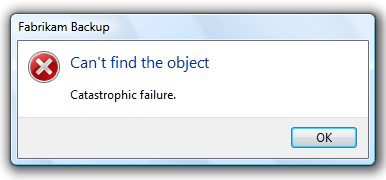
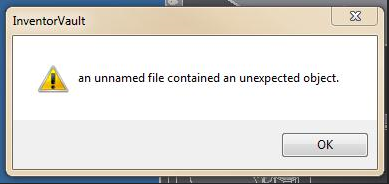
2. Be Short And Meaningful
Error message should contain necessary information. Most of the time user is not willing to read a long story.
Be concise and write a short description that is meaningful for user and gives him a clear idea of the problem and how to resolve it.
Avoid using redundant words and do not over communicate the problem.

Examples:
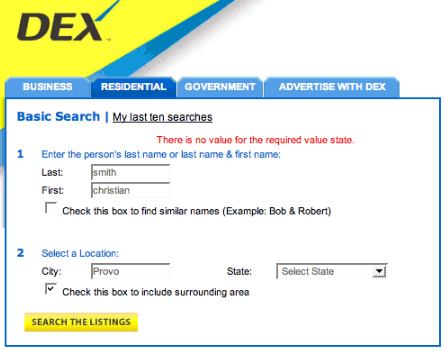
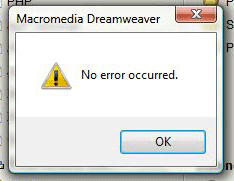
3. Don’t Use Technical Jargons
Most of the users are not interested in technical details of the problem occurred. If a message contains technical terms or jargons, the user gets confused.
Try to use simple and plain language without referring to implementation details.
If there is a need to mention technical and complex details, then place them in a troubleshooting section and direct the user so that he can resolve the issue quickly.

Examples:

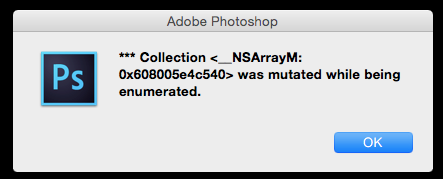
4. Be Humble — Don’t Blame User
A good error message is humble. It conveys the issues gracefully to its user without blaming him for his actions.
The user can perform an incorrect action again and again. But the design’s responsibility is to inform him about his mistakes in a good way.
“A good way to incorporate more human tone to your error messages is to think about explaining it out loud to someone. How does it sound when you speak it in conversation.” — Sonia Gregory

Examples:
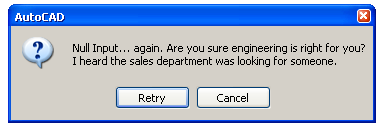
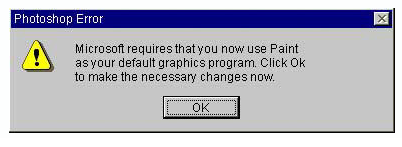
5. Avoid Negative Words
There are certain negative words that need to avoid on user interface. Since error messages are based on some unusual actions of user, there is a chance that system displays something disrespectful for user.
John Ekman gives a very good example of using “yes” and “no”:
“Some years ago, while checking in at the airport in Stockholm on my way to the U.S., I asked the woman at the counter if it would be possible to get an upgrade to business class. Her response: “I’m sorry, but that’s not possible. You would have to pay extra for that.” Checking in for the return flight, I tried the same thing again, but this time the answer was: “Of course, sir! How would you like to pay for that?”
So even though the seat availability and possibility for an upgrade was the same, I got two completely different answers: one “yes” and one “no.””
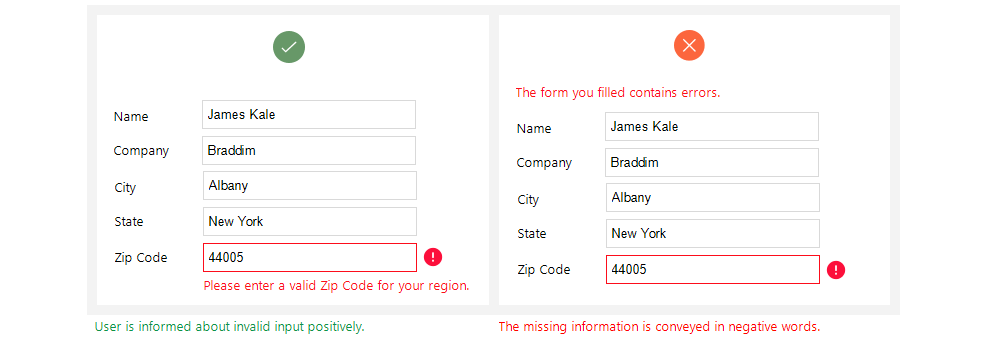
Examples:

6. Give Direction to User
A good error message has three parts: problem identification, cause details if helpful, and a solution if possible.
Whenever an error occurs, user wants to fix it as soon as possible. The error message should have enough information for user that guides him how to get out of the erroneous situation.
The message can also direct the user to some other place or person from where he can get detailed help about the problem.

Examples:
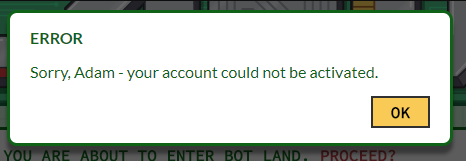
7. Be Specific And Relevant
The message should contain relevant information so that user can relate specified location and options easily.
Point out the exact location of problem — where user should go and and what steps are needed to follow to resolve it.
If error message contains vague information, the user will get confused and it becomes difficult for him to remove the error.

Examples:
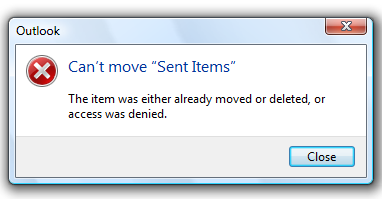
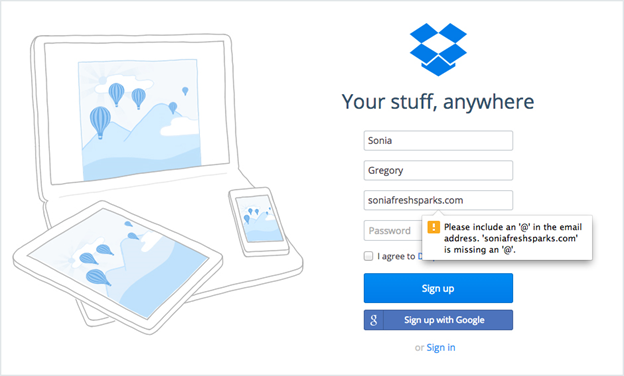
8. Avoid Uppercase Text
Upper case text is difficult to read it gives an impact of shouting on user.
Error message is a place where user is informed about some critical scenario, so using upper case text can give him a feeling of discouragement.

9. Provide Appropriate Actions
Actions are important part of an error message. Appropriate actions provide guidance to user about the next step.
Actions are possible routes to solve the problem. A message can contain one or more actions for the user.
“Give alert buttons succinct, logical titles. The best button titles consist of one or two words that describe the result of selecting the button.” — iOS guidelines
If user has to perform specific actions to remove the error, then use the same action name as button title.

Examples:
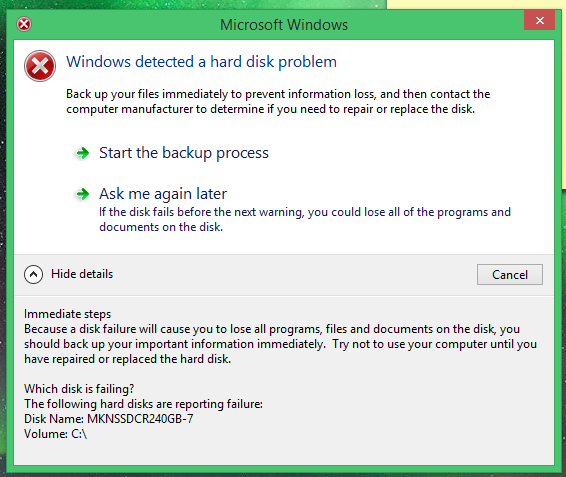
10. Use Progressive Disclosure Approach
If there is detailed information related to a message that user may not want to see, then place it in Show/Hide section. It can be useful for an advanced user that may want to know about technical details.
Just make sure to place least needed information in these sections as most of the time user will not go to Show/Hide section.
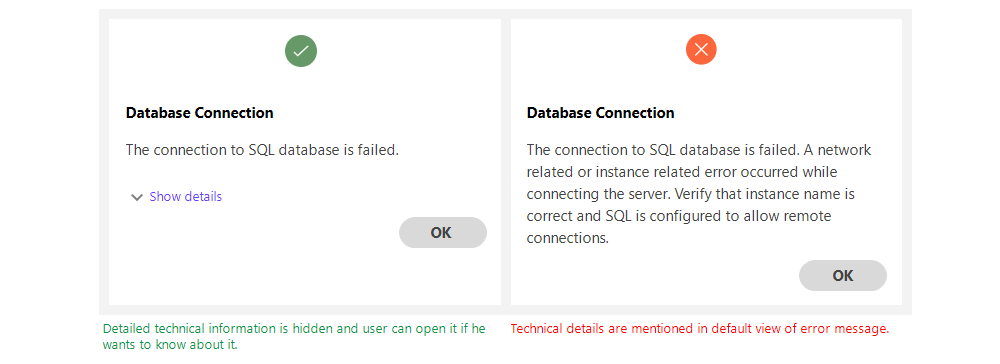
Examples:
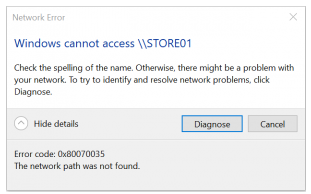
11. Use Proper Placement
It is very important to place an error message closer to the area from where it belongs to. User should not have to look here and there after reading the message that what it talks about.
For example, when user is filling information in a form, it is best experience to provide validation error along with the controls it relates to.
Otherwise user will first find the erroneous control and then resolve it.
An error message should be visible and noticeable. A message appearing on a screen should display in current view even user has scrolled the view to top or bottom.
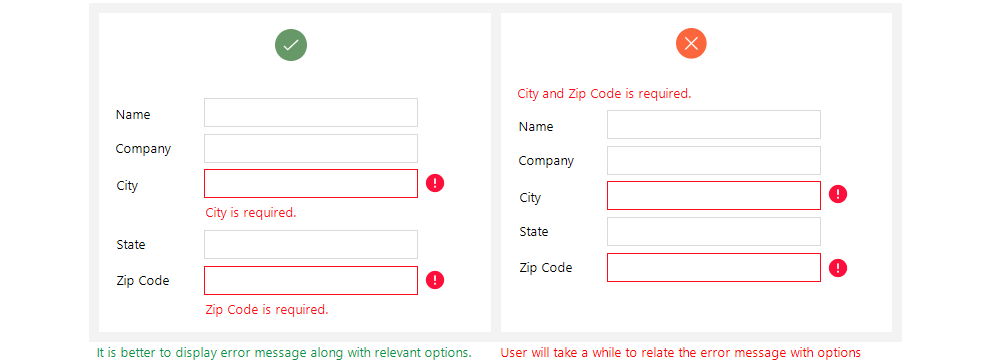
Conclusion
“The best error message is the one that never shows up” — Thomas Fuchs
It is good to avoid errors at all, but since we live in a world of humans, it is not possible to make everything perfect.
However, by following standard rules and guidelines, the errors can be handled in a helping way instead of scolding the user for his mistakes.
Good reading material on error messages UX guidelines:
Source:https://uxplanet.org/how-to-write-good-error-messages-858e4551cd4
Written by
Saadia Minhas
UX Design Passionate | Love to share and learn about UX design | Occasionally write about life lessons | minhas.saadia@yahoo.com | https://uxdworld.com/